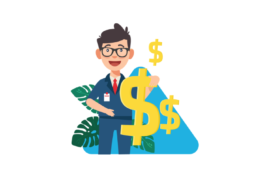While planned gifts pave the road for nonprofit sustainability, cultivating such beneficence requires finesse. By strategically leveraging bequests, annuities, and other deferred donations, astute organizations assure enduring support through vicissitudes. Such far-sighted contributions afford flexibility to address emergent needs while pursuing aims over the long haul. However, nonprofits must appreciate how planned giving bolsters missions through partnership rather than unilateral edict. By engaging donors as co-pilots navigating changing tides, relationships blossom into reservoirs replenishing communities for generations.

What is Planned Giving?
Planned giving can take various forms to allow donors to strategically support causes close to their hearts. It enables nonprofits to foster enduring relationships with contributors by cultivating an enduring commitment. Planned gifts frequently materialize as bequests bequeathed after a donor’s lifetime or life insurance policies that naming charities as beneficiaries. Likewise, trusts permit donors to generate income for chosen organizations.
Additionally, thoughtful planned giving facilitates leveraging riches to amplify philanthropic impact. Considerate allocation of assets considers personal fiscal realities and tax implications. Donors are thus equipped to maximize benefits for beneficiaries. Whether lump sums or installments, contributions can comprise cash, securities, or property to sustain education, the environment, or healthcare into the future.
Deliberately pledging funds payable over time, planned giving cultivates engaged patrons passionate about particular causes. It permits channeling donations through inheritances, trusts, or life coverage naming nonprofits as beneficiaries. By forging enduring relationships, nonprofits may rely on predictable support flowing from planned gifts.
Why is Planned Giving Important?
Planned giving stands as a pivotal tool for nonprofits due to its capacity to cultivate relationships with donors and safeguard fiscal durability in the long-term. By capitalizing on planned giving, nonprofits are empowered to guarantee recurring contributions, which can fund their functions and assist them in attaining objectives. Additionally, planned giving also aids nonprofits in cultivating relationships with donors, as patrons are more prone to stay engaged when committed to an establishment.
Planned giving helps benefactors to maximize their benevolent impact. It permits them to structure their gift in a manner that yields the most advantages to the cause they uphold. Through planned giving, benefactors can maximize their impact by exploiting tax incentives, such as deductions, or by establishing a trust to confirm resources are employed for their intended designations.
Moreover, planned giving supplies benefactors with the opportunity to leave an enduring legacy. Patrons can architectural their presents in such a way that they will aid the cause they champion long after they have departed. This can be accomplished through endowments, trusts, bequests, and other forms of planned giving.
How Can Nonprofits Leverage Planned Giving?
Nonprofits can leverage planned giving in a number of innovative ways to further their important missions. Through direct outreach, engaging campaigns, and relationship building, they can educate potential supporters about the enduring benefits of planned gifts. A well-designed planned giving program clearly outlines the varied options open to donors wishing to make a lasting difference. With recognition and appreciation for contributions, connections strengthen and future support encourages. Goals for applied funds should plan realistically yet ambitiously to needs tailored. To raise awareness of opportunities, nonprofits require savvy promotional plans for their planned giving initiatives ensuring potential donors know. Ensuring compliance with all pertinent regulations legally and fiscally maintains when establishing such programs. Nonprofits also must institute means to appropriately track and honor planned donations.
What Are the Benefits of Planned Giving?
There are numerous benefits to planned giving for both the donor and the organization receiving the gift. For the donor, planned giving can provide significant tax benefits and maximize their impact through future focused funding.
Organizations securing sustaining support achieve stable income to empower impactful initiatives. Additionally, recognition inspires generosity, as donors often gain visibility for transformational contributions planned to perform long term good.
Most obvious is empowering the future. By leveraging foresighted giving, non-profits can ensure designated dollars deliver on dreams, like new facilities cultivating communities or pioneering programs preparing people. Certainty that committed capital comes calling cultivates courage for change.
The Challenges of Planned Giving
While planned gifts can significantly aid nonprofits financially, certain difficulties arise too. Perhaps the most formidable is how both benefactors and charities must dedicate themselves for years. Moreover, bureaucracy and lawful aspects demand reflection when building such an endeavor. The complex commitments over prolonged periods challenge even conscientious organizations and donors intent on optimal assistance. Careful coordination and clear expectations, although laborious to establish, can mitigate protracted complexities to better serve all parties’ visions of societal support.
Conclusion
Planned giving enables charities to count on funds for their long-term goals. Donors have options to leave lasting impacts through various gifts. Organizations establishing planned giving programs gain reliable income streams and relationships with patrons across generations. Nonprofits should promote and cultivate planned gifts to ensure sustained support of their important missions.
Regularly scheduled donations simplify planning. With Werbylo’s recurring features, patrons select a frequency and amounts deposit automatically. Other organizations have leveraged Werbylo’s tools to receive consistent support. With enhanced engagement and oversight, nonprofits empower donors and strengthen their services. Continuous contributions strengthen communities through dependable assistance today and tomorrow.








